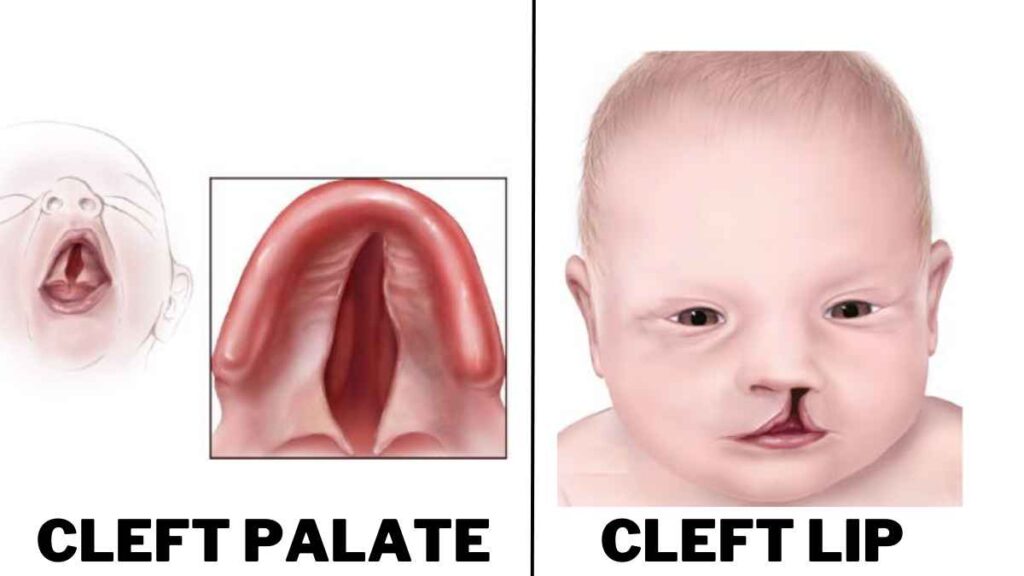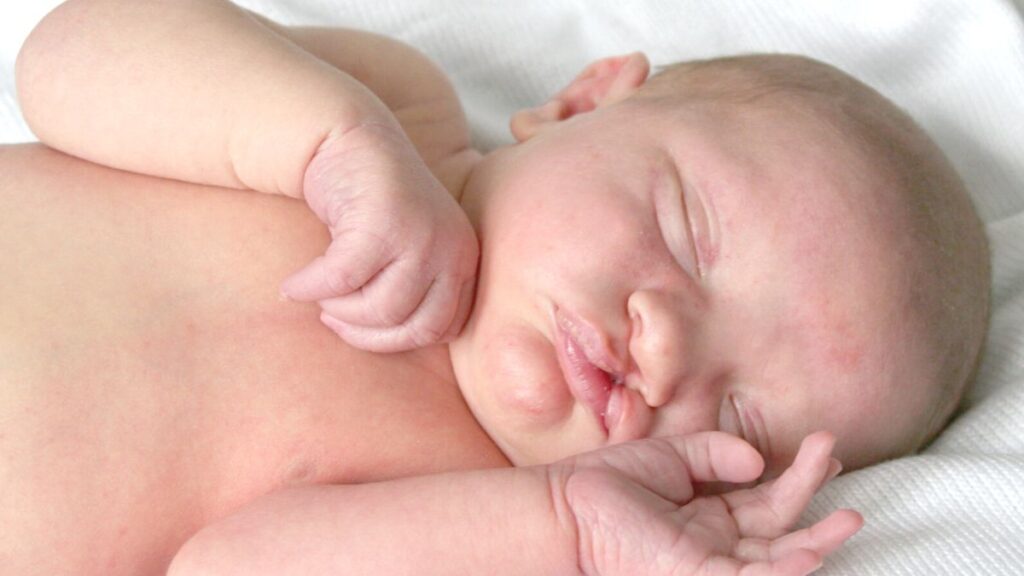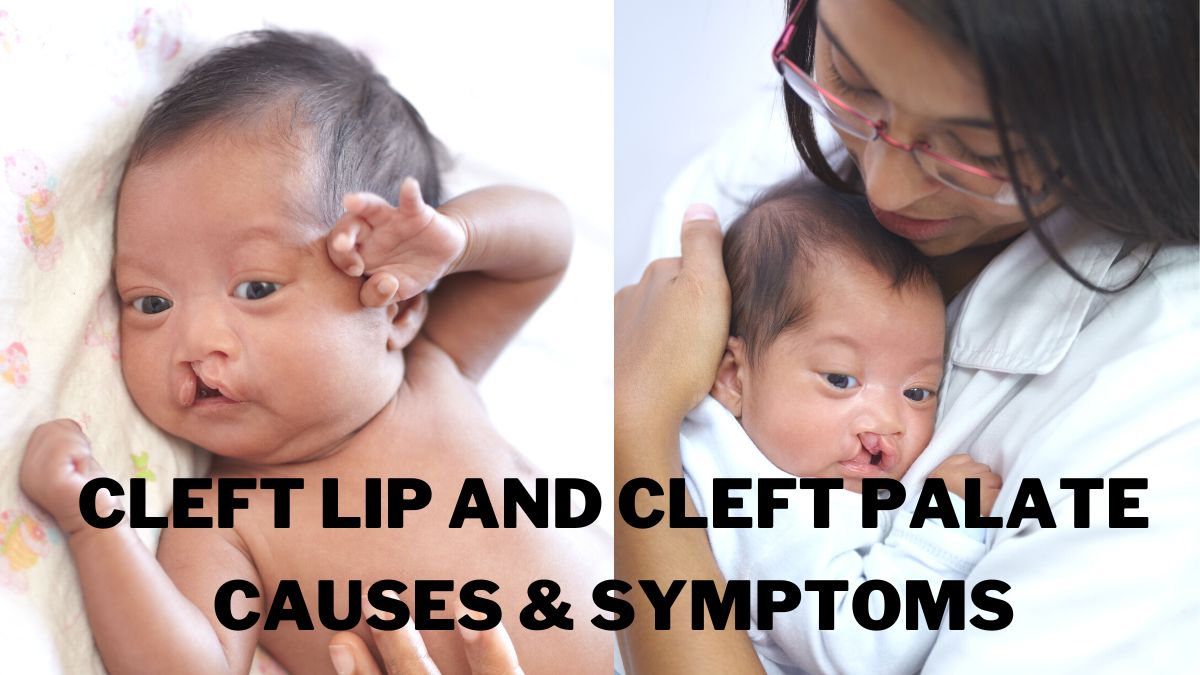Cleft lip and cleft palate are common birth defects that affect many newborns every year. These conditions occur when the baby’s lip or palate doesn’t form properly during development in the womb. In this blog post, we will take a closer look at the facts about cleft lip and cleft palate, including their symptoms, causes, and remedies.
What are Cleft Lip and Cleft Palate?
Cleft lip and cleft palate are congenital birth defects that occur when the lip or palate doesn’t form properly during the early stages of fetal development. A cleft lip occurs when there is a gap or split in the upper lip, while a cleft palate occurs when there is a gap or split in the roof of the mouth. These conditions can occur separately or together, and they can range in severity from a small notch in the lip to a complete split in the lip and palate.

Symptoms of Cleft Lip and Cleft Palate
The symptoms of cleft lip and cleft palate can vary depending on the severity of the condition. In mild cases, the baby may only have a small notch in the lip or a slight split in the palate. In more severe cases, the baby may have a large split in the lip and palate, which can cause problems with feeding, speech, and hearing.
Some of the common symptoms of cleft lip and cleft palate include:
- A split in the lip or palate
- Difficulty feeding or swallowing
- Nasal speech or difficulty speaking clearly
- Hearing problems
- Dental problems
- Facial deformities
Causes of Cleft Lip and Cleft Palate
The exact causes of cleft lip and cleft palate are not fully understood, but they are believed to be a combination of genetic and environmental factors. Some of the factors that may increase the risk of developing cleft lip and cleft palate include:
- Family history of cleft lip or cleft palate
- Exposure to certain medications or substances during pregnancy
- Maternal smoking or alcohol use during pregnancy
- Maternal malnutrition during pregnancy

Remedies for Cleft Lip and Cleft Palate
The treatment for cleft lip and cleft palate depends on the severity of the condition. Mild cases may not require any treatment, while more severe cases may require surgery and ongoing medical care. Some of the remedies for cleft lip and cleft palate include:
1. Surgery
Surgery is often the primary treatment for cleft lip and cleft palate. The surgery is usually done when the baby is between 3 to 6 months old for cleft lip and between 6 to 12 months old for cleft palate. The surgery aims to close the gap in the lip or palate and to improve the baby’s ability to feed, speak, and hear.
2. Feeding support
Babies with cleft lip and cleft palate may have difficulty feeding, especially if the cleft affects the palate. In some cases, a special feeding device may be used to help the baby eat, such as a specialized bottle or nipple.
3. Speech therapy
Children with cleft lip and cleft palate may have difficulty speaking clearly. Speech therapy can help improve the child’s ability to speak by teaching them techniques to use their mouth and tongue to make sounds.
4. Dental care
Children with cleft lip and cleft palate may be at a higher risk for dental problems, such as cavities and gum disease. Regular dental checkups and cleanings can help prevent these problems.
5. Counseling and support
Cleft lip and cleft palate can affect a child’s self-esteem and social interactions. Counseling and support can help the child and family cope with the emotional and social challenges of the condition.
For more parenting tips and advice, you can read more articles on our website. We always come up with thoroughly detailed articles on various topics. Some of them are listed below for your reference:
- Toy Story: Exploring the Importance of Toys for Children
- 10 Advantages of Reading Aloud to Children
- The Impact of Screen Time on Kids’ Development and 5 tips to Balance it
- 5 Common Benefits of Outdoor Play for Kids and How to Encourage It.
- Top 10 Fun Fitness Games for Children
- How to Clip Baby Nails: A Complete Guide
- How to Change a Diaper in 8 Easy Steps.
Conclusion
Cleft lip and cleft palate are common birth defects that can affect a
child’s feeding, speech, hearing, dental health, and overall well-being. These conditions can be caused by genetic and environmental factors, and their severity can vary. While there is no sure way to prevent cleft lip and cleft palate, there are remedies available to treat and manage the condition.
Surgery is often the primary treatment for cleft lip and cleft palate, and it can be done as early as 3 to 6 months old. Feeding support, speech therapy, dental care, counseling, and support can also be helpful in managing the condition and improving the child’s quality of life.
It’s important to note that children with cleft lip and cleft palate can lead full and healthy lives with proper treatment and care. Parents and caregivers of children with these conditions should work closely with healthcare professionals to ensure their child receives the best care possible. With early intervention and ongoing care, children with cleft lip and cleft palate can thrive and reach their full potential.
